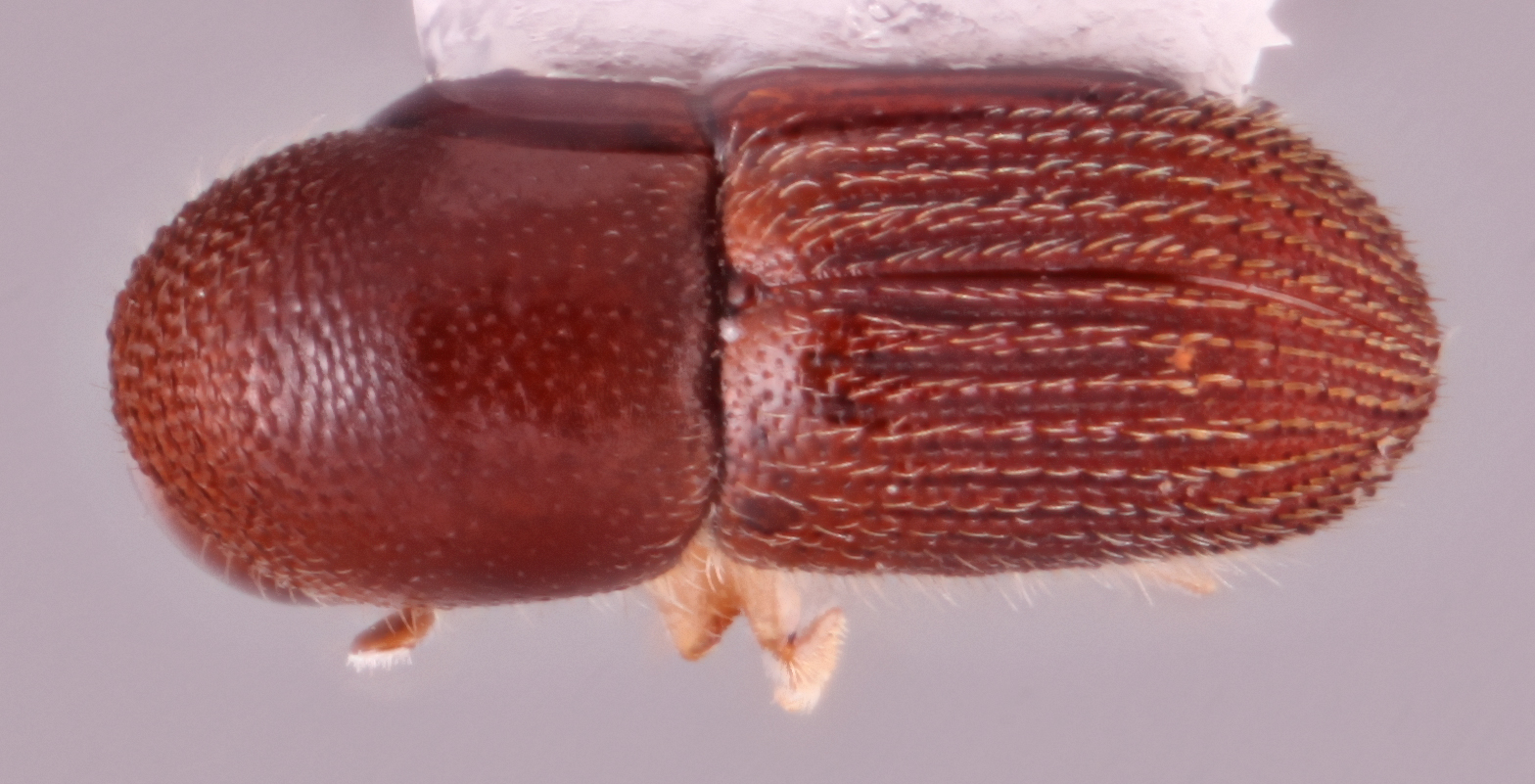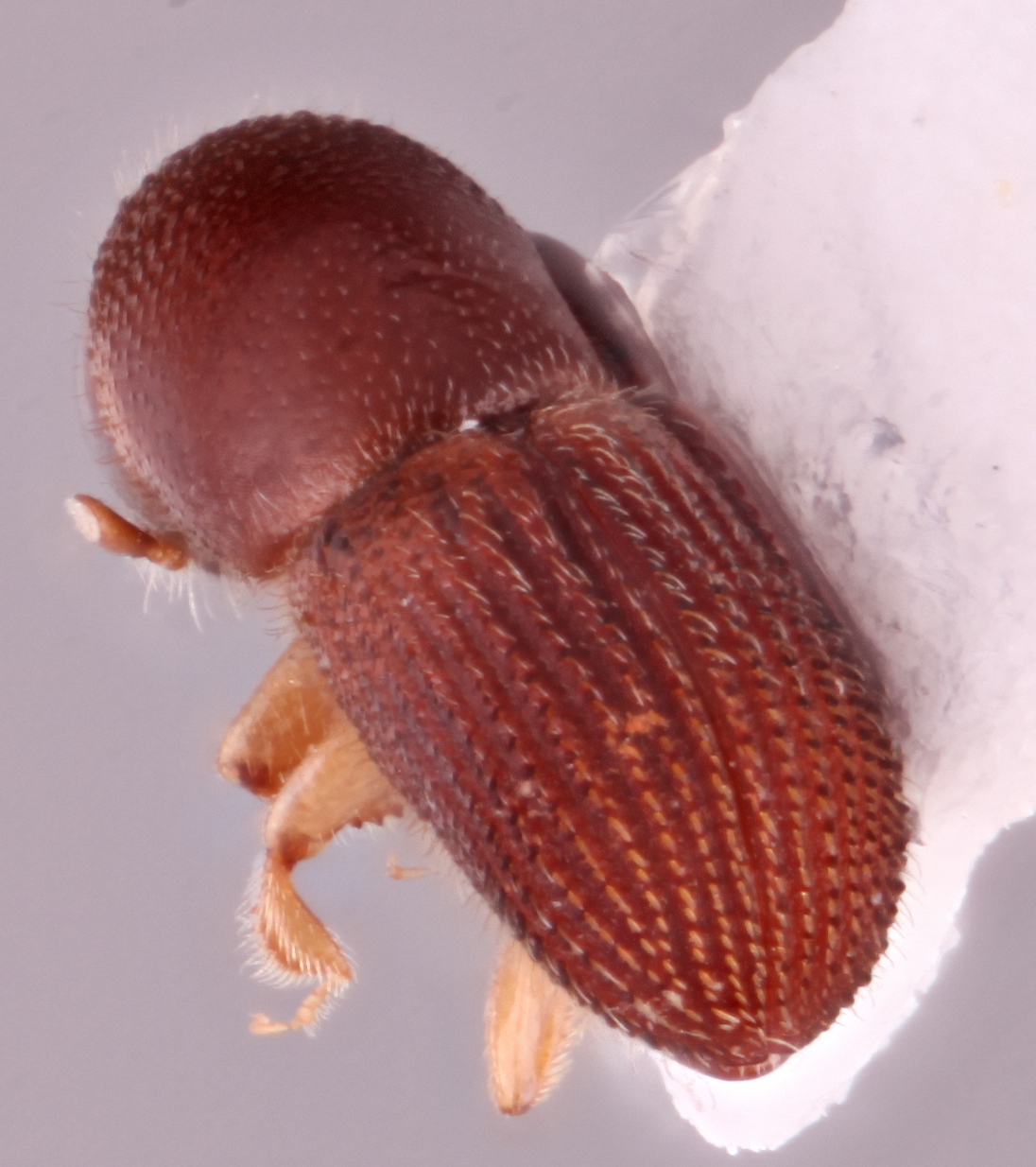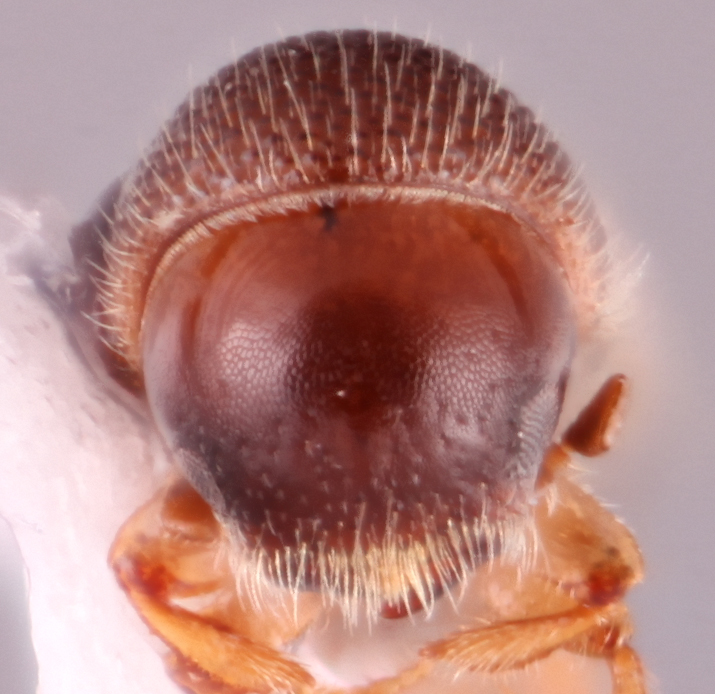Arixyleborus rugosipes
|
Arixyleborus rugosipes lateral; S.M. Smith |
|
Arixyleborus rugosipes dorsal; S.M. Smith |
|
Arixyleborus rugosipes declivity; S.M. Smith |
|
Arixyleborus rugosipes frontal; S.M. Smith |
Taxonomic history
Arixyleborus rugosipes Hopkins, 1915a: 59.
Synonyms
Webbia medius Eggers, 1927b: 104. Schedl, 1952d: 162; Beaver and Liu, 2010: 22.
Webbia camphorae Eggers, 1936a: 634. Browne, 1955: 351; Beaver and Liu, 2010: 22.
Diagnosis
1.7−2.0 mm long (mean = 1.84 mm; n = 5); 2.83−3.33 times as long as wide. This species is distinguished by the protibiaprotibia:
tibia of the first pair of legs
posteriorposterior:
toward the rear end; opposite of anterior
 face inflatedinflated:
face inflatedinflated:
blown up; distended
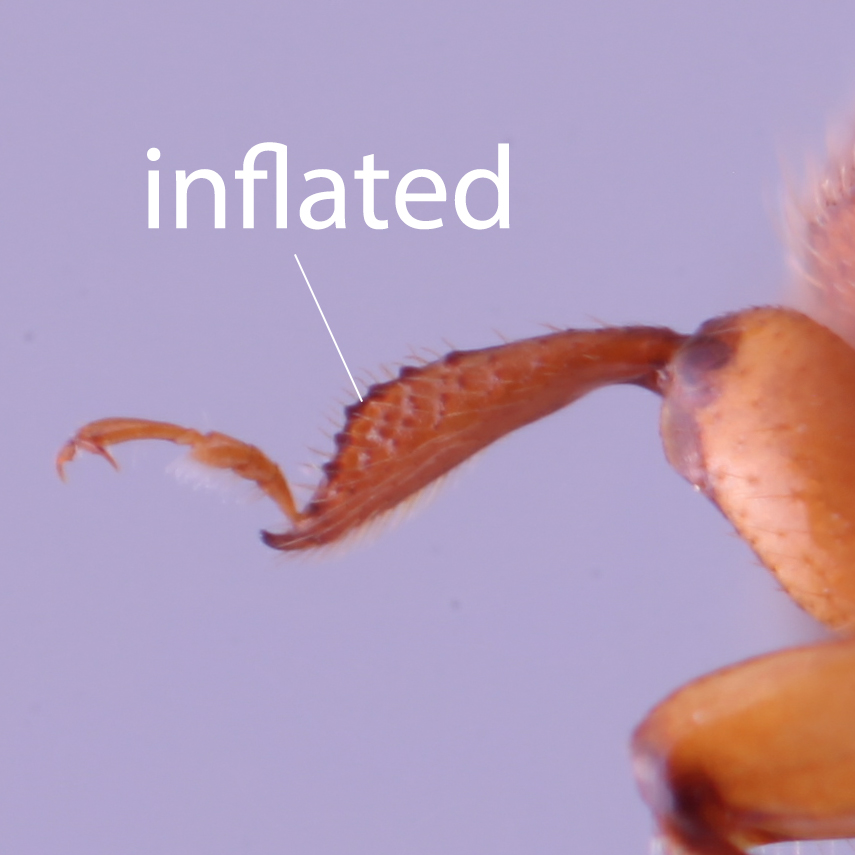 and granulate; antennalantennal:
and granulate; antennalantennal:
pertaining to the antennae
club broader than tall; pronotumpronotum:
the dorsal surface of the thorax
laterallateral:
pertaining to the side
 margin oblique; pronotumpronotum:
margin oblique; pronotumpronotum:
the dorsal surface of the thorax
anterioranterior:
the front or forward; opposite of posterior margin without serrations; posterolateralposterolateral:
margin without serrations; posterolateralposterolateral:
relating to end of the side part/portion
 carinacarina:
carinacarina:
an elevated ridge or keel, not necessarily high or acute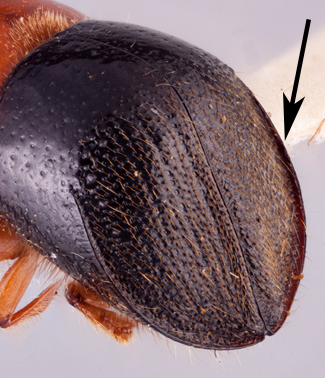 acute, denticulatedenticulate:
acute, denticulatedenticulate:
covered in denticles
; strial furrows and interstrial ridges anteriorly extending to basalbase:
point or edge closest to the body; opposite of apex quarter of elytralelytral:
quarter of elytralelytral:
pertaining to the elytra
discdisc:
the flat central upper surface of any body part (e.g. pronotum and elytra) ; and interstriaeinterstria:
; and interstriaeinterstria:
longitudinal spaces along the elytra between the striae, which is not as<br />
impressed and bear smaller punctures.
 densely setose with long hairs and bristles.
densely setose with long hairs and bristles.
May be confused with
Distribution
recorded in the study region from India (Andaman Is.), Laos, Taiwan, Thailand, Vietnam; also recorded from Sri Lanka, East & West Malaysia, Indonesia (Java, Maluku, Sumatra), Philippines
Host plants
polyphagous; Browne (1961b) suggests a possible preference for Dipterocarpaceae, but this may simply reflect the abundance of this family in the forests of the region
Remarks
Browne (1961b) describes the condition of attacked host material, the gallery system, and development of the species.
DNA data
Sequences available for COI and CAD.
COI: OP617797


